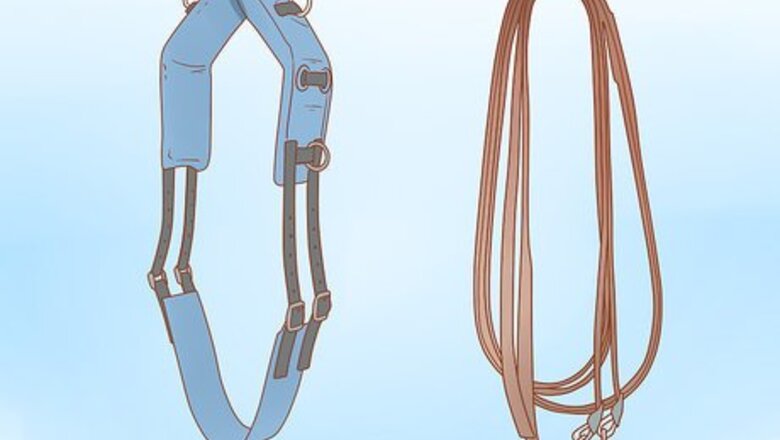
views
X
Expert Source
Kate JutagirEquestrian Specialist & Trainer
Expert Interview
Most importantly, bond with your horse so that you are both comfortable working together.
Employing the Ground-Driving Method to Teach Impulsion
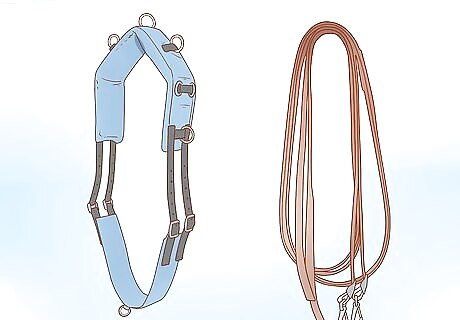
Gather the equipment you need to begin training. Make sure you have an enclosure to work in. A round enclosure works best, so that your horse can practice going in circles on reins or a long lunge line (about 30 feet (9.1 m)). Next, make gather up any basic saddle and long driving reins. A training surcingle is a band that straps around the horse’s chest. It’s not necessary, but they are helpful and inexpensive tools. You can easily clip reins or lines to the many rings on a surcingle. If you don’t have one, your halter is fine to use on it's own. If you don’t have driving reins (which you can buy at a tack store or online), any set of lunge lines will be just fine.
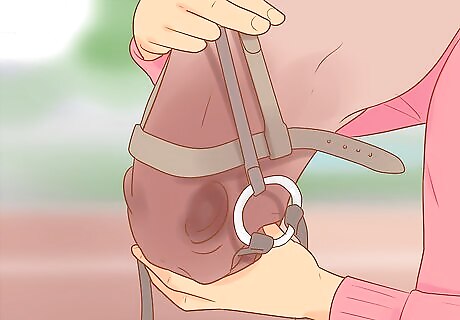
Teach your horse to yield to the bit so that you can control them. In order to effectively direct and control your horse you need them to get used to being on a bit. Place the bit in your horse’s mouth. Then tie the rein connected to the bit to the saddle. Make sure the rein is taut, but not too tight. There should be about an inch of slack. In this position, the horse will move the bit around in their mouth to a position that is comfortable for them. This method is called “tying off”. Your horse will quickly grow used to adjusting the bit themselves.
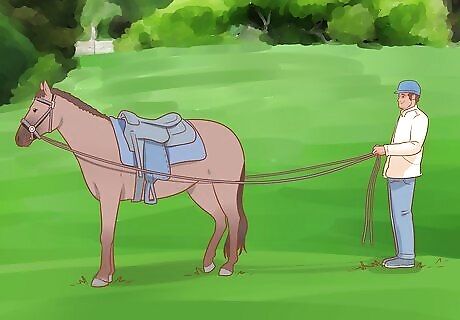
Stand behind the horse and pick up the reins. The point of ground driving is to get your horse used to taking direction from behind. This will make them easier to ride and could help them learn to pull later on. Position yourself behind the horse and slightly off to one side. This will ensure that you won’t get kicked. Take the reins in one hand, making sure there is plenty of slack so that the horse can move when directed.
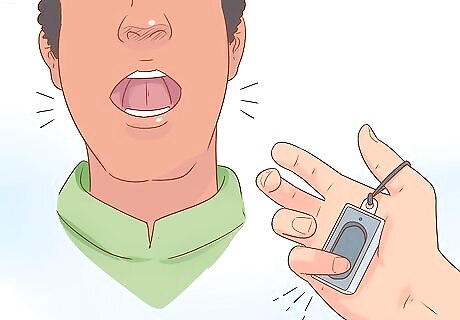
Cluck the horse forward with your mouth or a clicker. Horses respond well to verbal cues. Make a clucking noise with your mouth as a signal that you want your horse to move forward. Keep the volume and length of the cluck consistent throughout training so that your horse doesn’t get confused. Some people prefer to use a clicker instead of verbal clucking. You can purchase a clicker online or at a tack store. Simply click it instead of clucking when you want your horse to move. It doesn’t matter whether you click or cluck.
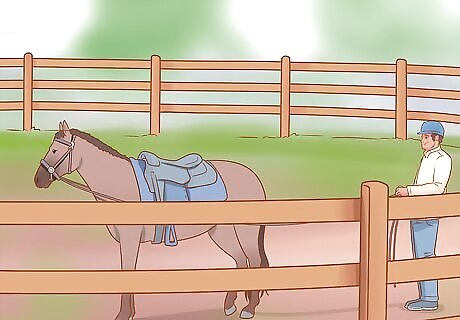
Move your horse around the pen, changing directions when ready. When you start training, you may have to snap the reins or gently touch them to the horse’s rear. This, combined with a cluck, is the signal that they should move. As you progress, you’ll likely just need to cluck and pick up the reins. Once your horse is used to driving forward, you can work on changing directions by pulling lightly on the reins and clucking. If you’re turning the horse left, pull on the rein in your left hand, bending your elbow to guide the horse. Keep your right arm straight. Reverse this when turning right. Don’t give your horse too much slack. Keep some tension on the reins even while turning.
Using Flexible Methods to Teach Dressage
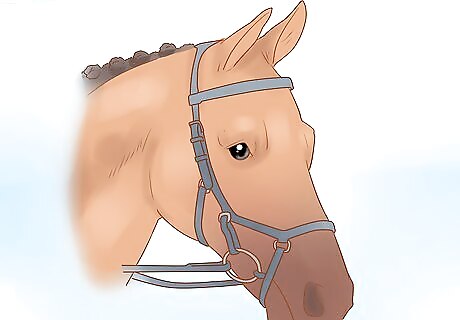
Choose a bridle and bit that your horse will tolerate. By the time you start training for dressage, your horse should be used to being on the bit. But that doesn’t mean that all bits are the same. Try some different ones to see which your horse responds well to. Some horses prefer a softer bit, while others require a firmer bit. For most horses, a double-jointed bit works best for dressage training.
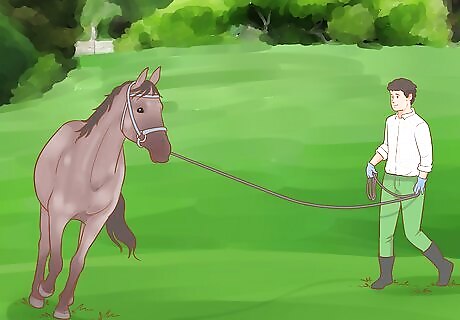
Work your horse on the lunge line to warm them up. Help your horse loosen their muscles by lunging them out. Hook a simple lunge line to the halter or bridle and lead them in a circle around the enclosure. A typical warm-up session should last about 15-20 minutes. During the warm-up, you can practice changing gaits and directions.
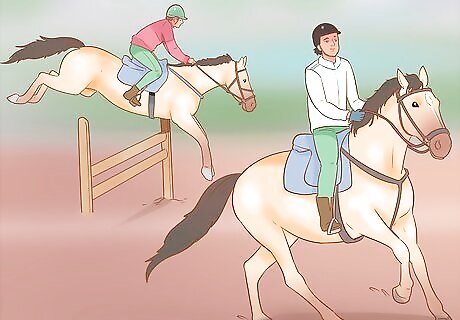
Adapt your training plan to fit your horse’s mood. It’s a good idea to head into the training session with an idea of what you want to work on. Maybe you want to teach a particular stretch or jump. Keep in mind that horses have moods, just like people. If your horse is acting difficult or uninterested, they might need to work on something else that day. Instead of working on a new skill, go back and polish up a skill that you’ve worked on previously. If your horse is really low energy, try just going for a leisurely ride. You can also try a new skill again the next time.
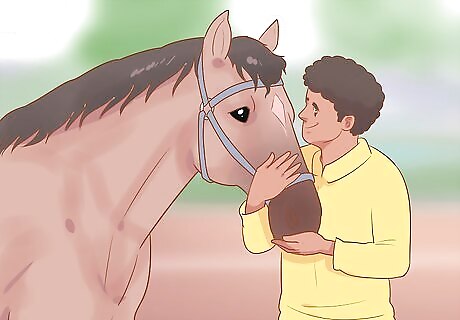
Demonstrate clear leadership so that your horse feels comfortable. Let your horse know that you are in control by giving clear orders. Use the same types of clucks and verbal commands (like “whoa”) during each session. Don’t let your horse get away with pulling you or changing directions without being asked. Your horse will feel confident knowing that you are in control. If your horse is having a bad day, give them plenty of breaks. They might just need a rest.
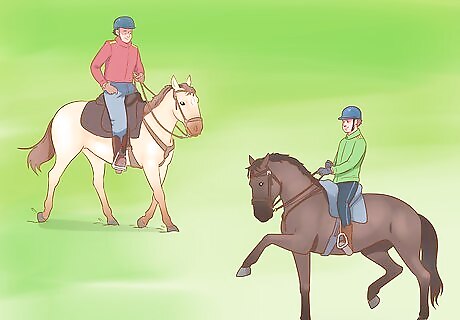
Establish a steady, consistent rhythm for the duration of the workout. Before you can train specific skills in dressage, you need your horse to be able to maintain the same gait for an entire dressage test. Warm your horse up by walking, trotting, and cantering for a few minutes each. Then, ride your horse around the ring several times in a trot. This will help them find their rhythm.
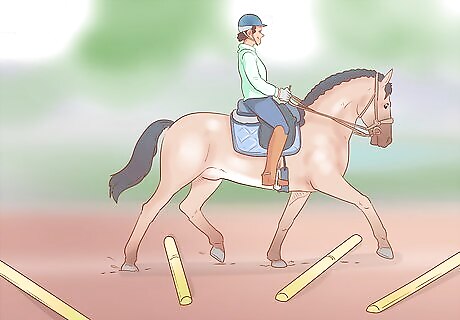
Ride in circles to improve suppleness. Responsiveness is key in dressage, and your horse will find it easier to respond when they’re easily able to move and follow cues. To practice circles, place a traffic cone or jump standard in the center of the ring. Practice riding your horse in 20 metres (66 ft) circles around the cone. Using the reins, press the horse against your inside leg while turning in the circle. Their nose should be pointed slightly towards the cone as you ride in circles. Spend equal amounts of time riding clockwise and counterclockwise.
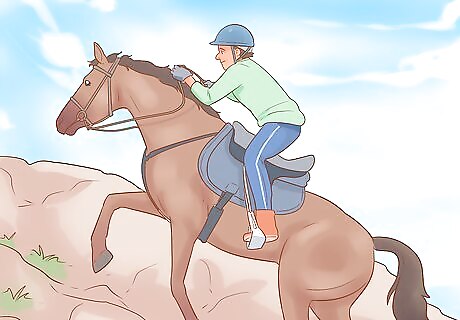
Include variety in your training to keep your horse sharp. Horses can get bored with routine. Mix things up by finding different ways to spend time together. You can take trail rides or practice low jumps in place of a more focused training session.
Bonding with Your Horse and Setting Clear Goals for Training
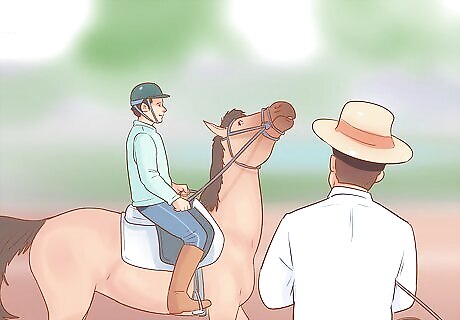
Make sure are comfortable working with horses. It’s important that you are confident in your ability to handle a horse. Horses can sense if you’re unsure, and might not follow your lead. Before training, make sure that you feel comfortable not only riding a horse, but caring for one. If you’re not a skilled rider or handler, that’s okay. Take some riding lessons or ask a local stable if they need some help mucking out stalls. The more you’re around horses, the more confident you will feel. If you have a new horse but don’t feel comfortable training it, you can hire a trainer or ask a friend with more experience to help you.
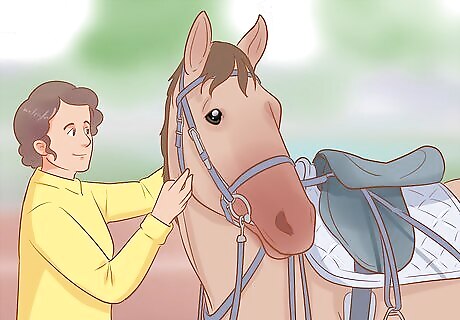
Get to know the horse. Like humans, horses have different temperaments. Before you start training, spend time just being with the horse and observing their nature. You can watch how they react when someone approaches or when you try to touch them. Slowly allow the horse to get used to your touch by softly touching their face. You can speak softly to them so that they get used to your voice. Some horses are more skittish than others and that’s okay. Just know that you might have to spend more time getting them to trust you.
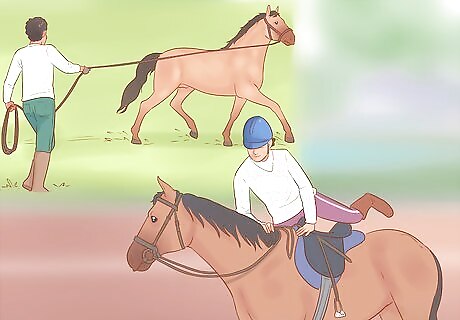
Set clear goals and measure your progress. As with any training program, it’s important to know what you want to accomplish. Before you begin your sessions, take some time to write down what you would like to teach your horse to do. You might include things like: Working on a lunge line. Standing still for the vet or farrier. Tolerating a saddle and bridle. Allowing you to ride them. Loading themselves into a trailer.




















Comments
0 comment